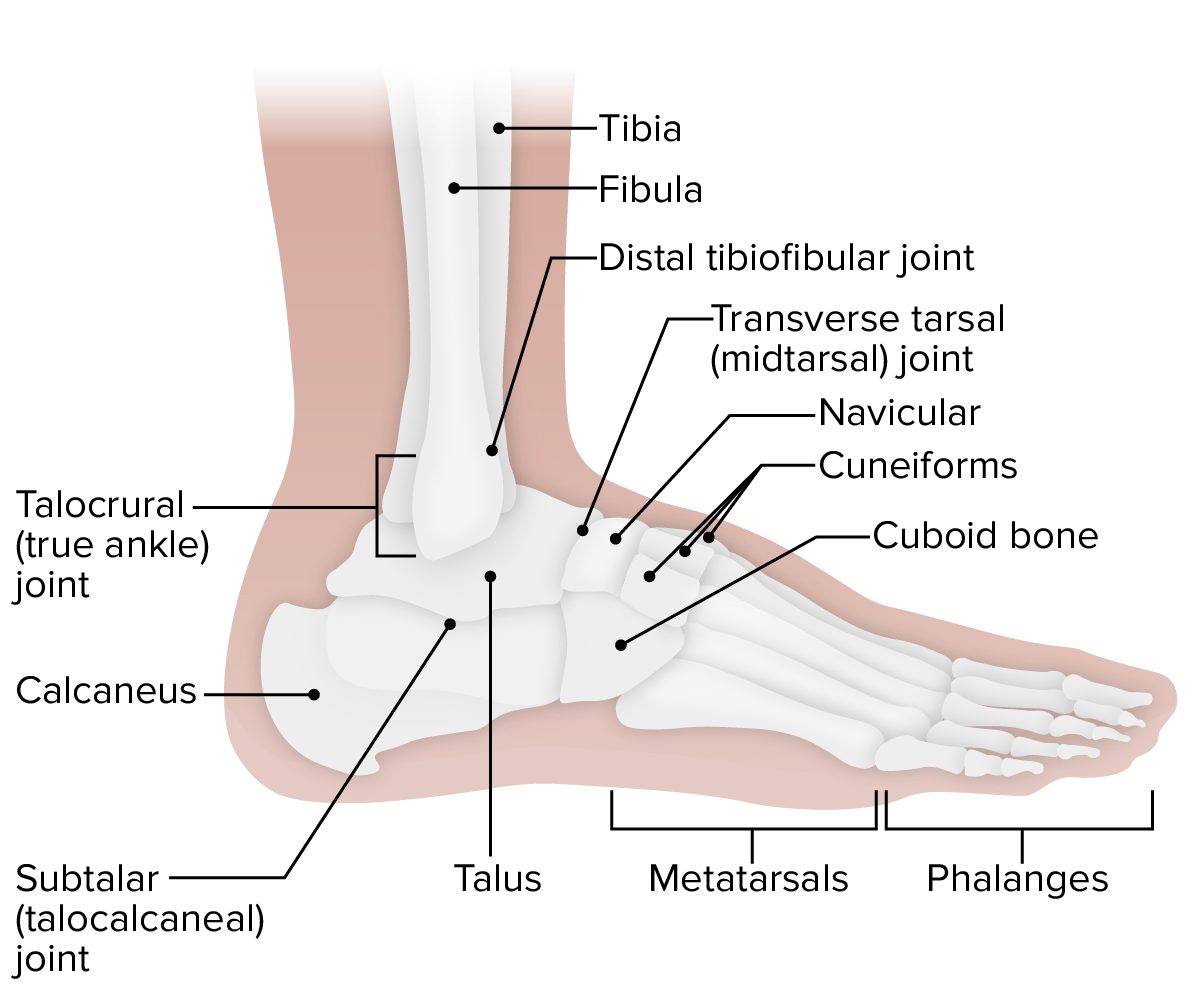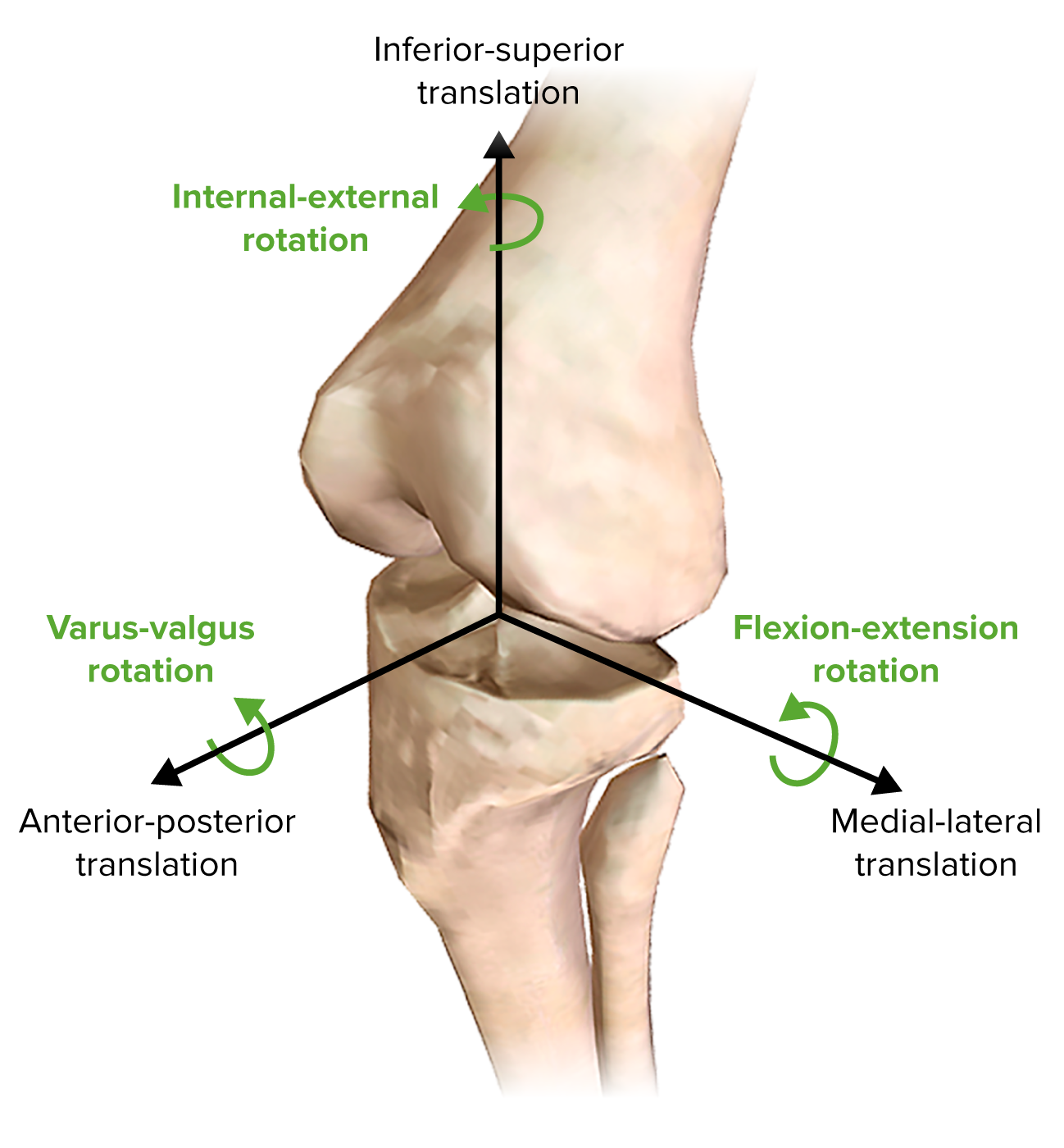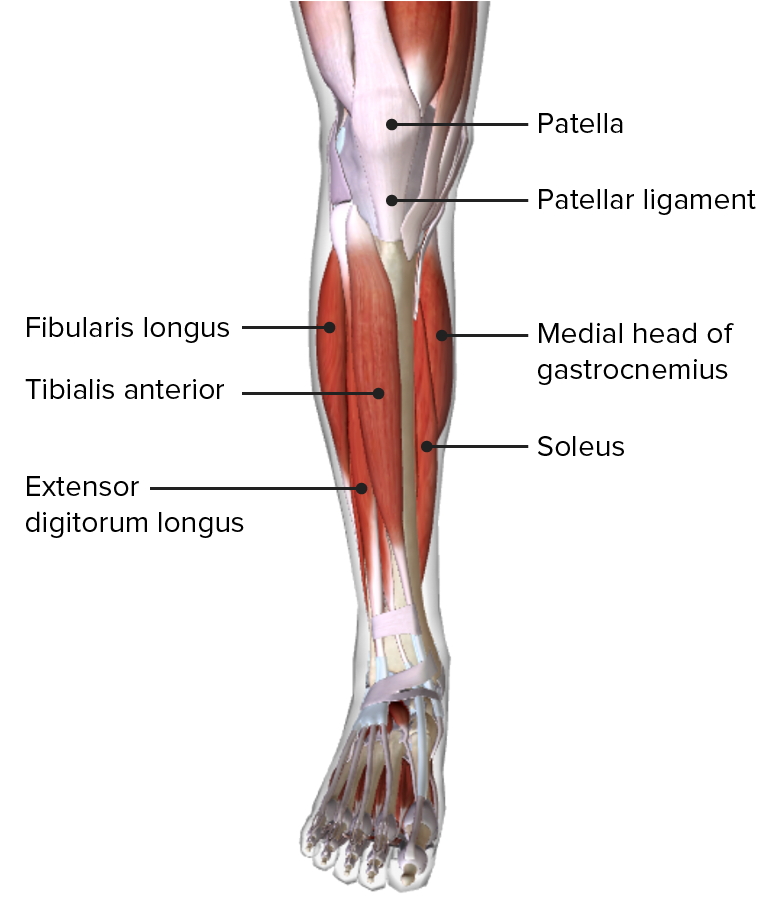Playlist
Show Playlist
Hide Playlist
Ligaments and Menisci of the Knee Joint - Joints of Lower Limb
-
Slides 09 LowerLimbAnatomy Pickering.pdf
-
Download Lecture Overview
00:00 Now, let's have a look inside the knee joint, and there's a series of structures I want to detail. 00:05 Here, we have the cruciate ligaments and the menisci. 00:09 So, here, we have a flexed knee, and we can see we have the femoral condyles sitting on the tibial plateau. 00:17 And here, we have the lateral and medial menisci, and here, we have the cruciate ligaments forming this cross through the center of the knee joint. 00:25 We have a section looking down onto the tibial plateau, anteriorly here and posteriorly here. 00:33 We can see where the posterior and the anterior cruciate ligaments are originating from. 00:39 So, the cruciate ligaments form this cross-like arrangement running from the tibia to the femur, and they're important in limiting the rotation of the knee through about 10 degrees. 00:51 Due to their orientation, one of the cruciate ligaments is always taut when the knee assumes different positions. 00:59 So, whatever the position the knee is assuming, one of these cruciate ligaments will be taut, and that increases the stability. 01:07 So, let's start with the anterior cruciate ligament, and this is a weaker ligament. 01:12 It's weaker than the posterior. 01:14 Here, we can see the anterior cruciate ligament passing from the anterior intercondylar area here of the tibia. 01:21 We can also see it passing from this region here, the anterior intercondylar area, so in between the condyles of the tibia. 01:29 It's then passing posteriorly and superiorly, heading towards the lateral condyle. 01:36 So, it passes posteriorly, it passes superiorly, and laterally to the lateral condyle. 01:42 And we can see it passing in this direction as well. 01:45 The anterior cruciate ligament is going to prevent the posterior rolling of the femoral condyles on the tibial plateau when it's flexed, when the knee is flexed. 01:55 So, here, we can see with a flexed knee that the femoral condyles won't be able to move posteriorly, because they'll be limited via this anterior cruciate ligament. 02:05 Also going to prevent the posterior displacement of the femur on the tibia and also preventing hyperextension of the knee. 02:16 When flexed, the tibia cannot be pulled forward. 02:20 So, because of this attachment, when flexed, the tibia won't be able to be pulled forward because of the attachment of the anterior cruciate ligament. 02:30 So, think about the position of the anterior cruciate ligament, and then think about how keeping that ligament taut prevents various movements of the knee. 02:40 The posterior cruciate ligament is stronger than the anterior and it's running from the posterior intercondylar area of the tibia, and it passes superiorly and medially to the medial condyle. 02:54 So, here, we can see the posterior cruciate ligament passing in this direction. 02:58 We can see it here passing from the posterior area of the tibial plateau. 03:05 The posterior cruciate ligament is passing superiorly and medially towards the medial condyle. 03:12 The posterior cruciate ligament prevents the anterior rolling of the femoral condyles on the tibial plateau when it's fully extended. 03:23 So, when the knee joint is extended, the anterior movement of the femoral condyles is prevented. 03:29 It also prevents the anterior displacement of the femur on the tibia or the posterior displacement of the tibia. 03:37 It helps to prevent the hyperflexion of the knee, and when the knee is flexed, the tibia cannot be pushed backwards. 03:47 So, when the knee joint is flexed, the posterior cruciate ligament prevents the tibia from being pushed backwards. 03:56 Now, let's talk about the menisci, and these are crescent-shaped plates of cartilage on the tibial plateau, and they help to deepen the articular surface. 04:07 They act as shock absorbers, and they're thickest at the margins where they attach to the fibrous capsule. 04:14 So, the thickest on the lateral and the medial extremes where they're attaching to the fibrous capsule. 04:21 Centrally, the menisci are thin, and they're firmly attached at the intercondylar area of the tibia via coronary ligaments. 04:29 So, here, we can see a menisci is running around here. 04:33 So, we can see these crescent-shaped menisci running all the way around here. 04:38 We've got the medial meniscus, and here, we've got the lateral meniscus. 04:43 We can see the anterior aspects of the menisci are connected via this transverse ligament of the knee. 04:52 See this transverse ligament that is connecting the two anterior aspects of the menisci. 04:59 And centrally, like I said, they are thin, but they're firmly attached to the intercondylar area via the coronary ligaments. 05:08 The medial menisci is C-shaped. So, here, we can see the C-shaped menisci. 05:16 It attaches anteriorly to the intercondylar area around about the attachment of the anterior cruciate ligament, and posteriorly, it attaches near the posterior cruciate ligament on the intercondylar area. 05:30 They're firmly attached to the tibial collateral ligament. 05:34 So, the medial menisci is attached to the tibial collateral ligament. 05:39 The lateral menisci is almost circular and it is more mobile. 05:44 Popliteus separate it from the fibula collateral ligament. 05:50 So, popliteus muscle, remember, running along the posterior aspect from the lateral aspect of the lateral condyle down onto the fibula is separating the lateral menisci from the fibula collateral ligament. 06:08 The posterior meniscofemoral ligament, we can see here, the posterior meniscofemoral ligament joins the lateral menisci to the posterior cruciate ligament and also the medial femoral condyle.
About the Lecture
The lecture Ligaments and Menisci of the Knee Joint - Joints of Lower Limb by James Pickering, PhD is from the course Lower Limb Anatomy [Archive].
Included Quiz Questions
Which movement does the fibular collateral ligament prevent?
- Adduction
- Flexion
- Plantar flexion
- Reduction
- Lateral flexion
Which phrase describes the anatomical shape of the medial meniscus?
- C-shaped
- Ring-shaped band
- Cord-shaped
- Y-shaped band
- Tortuous band
In a relative comparison between the posterior cruciate ligament and the anterior cruciate ligament, which term describes the anterior cruciate ligament?
- Weaker
- Stronger
- More rotated
- Less rotated
- Similar in all regards
Which statement describes the menisci?
- It acts as a shock absorber.
- It is thickest on the anterior extremes.
- It is connected to the femur by coronary ligaments.
- It is most thick in the central zone.
- The posterior margins are attached to each other.
Customer reviews
5,0 of 5 stars
| 5 Stars |
|
5 |
| 4 Stars |
|
0 |
| 3 Stars |
|
0 |
| 2 Stars |
|
0 |
| 1 Star |
|
0 |







